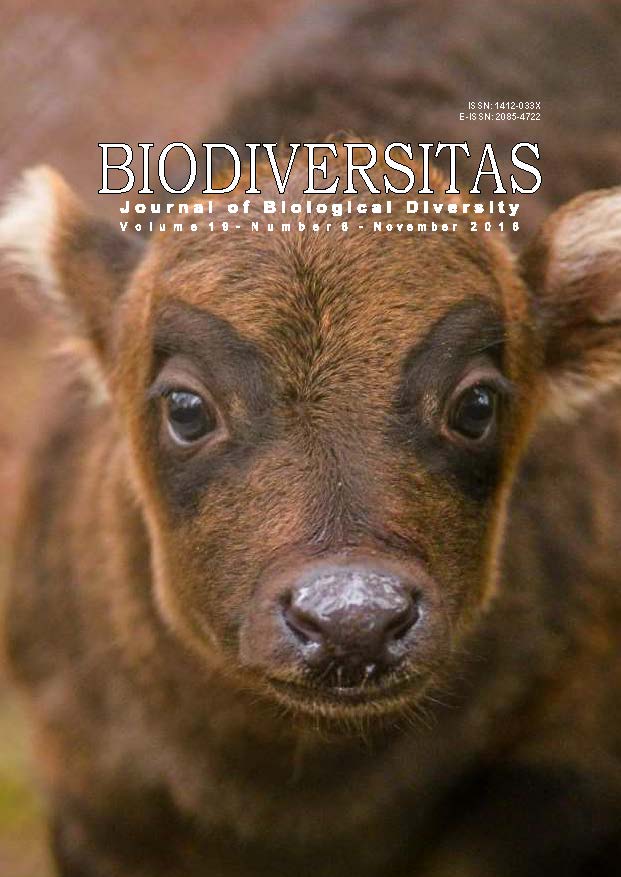Smallholder farmers livestock production on the face of climate change in Bahir Dar, Zuria District, Northwestern Ethiopia
##plugins.themes.bootstrap3.article.main##
Abstract
Asmare B, Meheret F. 2018. Smallholder farmers livestock production on the face of climate change in Bahir Dar, Zuria District, Northwestern Ethiopia. Biodiversitas 19: 2329-2334. The objective of the study was to assess the livestock production and marketing system in smallholder systems of the area Bahir Dar Zuria district. Three kebeles were selected from Bahir Dar Zuria district based on livestock production experience and accessibility to the road. A total of 90 respondent farmers were used to conduct the assessment, and 4 key informants in each Kebele were used to get additional information. Primary data were collected using a semi-structured questionnaire and supplemented with key informants and secondary data sources. Descriptive statistics such as frequency (%) and mean were employed to present the qualitative variables obtained from the survey. The average land holding in the area was 0.73 ha of total land with 0.53 ha cropland and 0.2 ha private grazing land. With regard to labor allocation for livestock, family labor was involved in 91.18% of respondents while in the rest hired labor herded, fed, and watered livestock. With regard to water sources, the major source of water for livestock in the households was river (89%) while the remaining respondents use dug well for their livestock. The frequency of watering livestock was twice a day (51%) in the dry season and once a day (44.3%) in the wet season. Most of respondents (53.65%) sell their live animals during religious festivities followed by selling during the season of critical feed shortage (24.45%). Although smallholder farmers are vulnerable groups to climate change the majority (42%) had no information about climate change problem in the study area. The perception of household heads indicated that the livestock holding in the last five years of the family increased in most of the respondents (51%), followed by decreased condition (33%) and remained constant for the rest of the respondents (16%). Overall, it is important to assist livestock producer in enabling them benefit most from livestock and their products.
